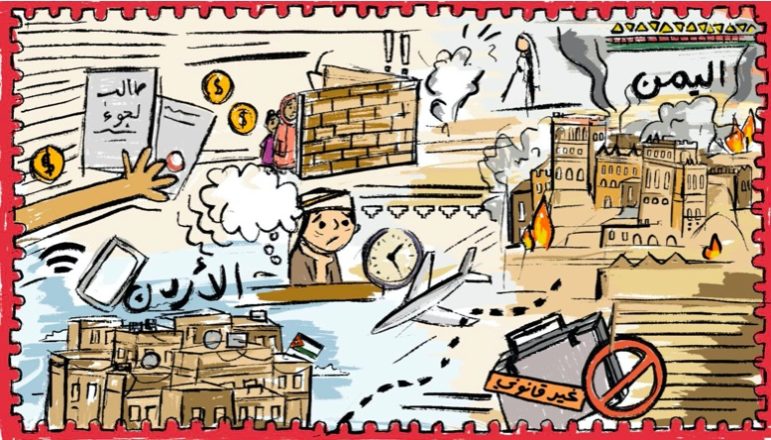

The 5th Element: A Mexican Investigative Reporting Lab
The “barrage” of censorship and pressure to which Mexican journalists have been exposed in recent years reminds reporter Alexandra Xanic of the 1990s. The dependence of the media on official advertising, reductions in newsroom staff, and the search by media outlets to “fill spaces” mean that investigative journalism is increasingly forgotten, and the little that is done fails to have the impact it should.
The issue has become a concern not only for Xanic, but for her colleagues Daniel Lizárraga, Ignacio Rodríguez Reyna, and Marcela Turati, who wanted to do something about it.
 However, it was Lizárraga’s dismissal in 2015 that triggered action. The journalist was part of the investigations unit at radio news program Primera Emisión, which was led by Carmen Aristegui. Lizárraga directed one of the team’s most controversial investigations, “La Casa Blanca de Peña Nieto” (The White House of Peña Nieto). The article revealed that a government contractor had given the presidential family a multi-million-dollar house the president had not declared.
However, it was Lizárraga’s dismissal in 2015 that triggered action. The journalist was part of the investigations unit at radio news program Primera Emisión, which was led by Carmen Aristegui. Lizárraga directed one of the team’s most controversial investigations, “La Casa Blanca de Peña Nieto” (The White House of Peña Nieto). The article revealed that a government contractor had given the presidential family a multi-million-dollar house the president had not declared.
Lizárraga, as well as his colleagues, were in “a moment of their careers in which, whether for pressure or by decision, we thought about the possibility of doing new things,” Xanic told the Knight Center.
It was in this context and after months of talks and receiving the support of many “godfathers and godmothers” that Quinto Elemento Lab was born, a project led by these journalists that they hope to use to promote investigative journalism in Mexico.
Quinto Elemento (which means Fifth Element) works like a laboratory. In their previous discussions, the group of journalists understood that there are many reporters in the country with “very good topics of investigation,” but they lack the accompaniment of other colleagues with whom to discuss method, planning, or diffusion, Turati explained to the Knight Center. Xanic agrees.
“Very often we learn to research alone, and we do not have others to bounce ideas off of,” Xanic said. “And very, very often the editor who should act like an advisor, or that person with whom we explore different ways of investigating, does not fulfill those functions, either because he does not have time, trying to fill pages, or because simply the editors are trained in another school, to cut [texts] and not to accompany. So we walk very free, we walk very alone, and I think that has been our experience. The idea of a team that makes you stronger is one that has been most welcome.”
Xanic refers not only to the support shown by other colleagues and media outlets once Quinto Elemento was launched on March 9, but also the number of people who have applied to the first of three fellowship contests the organization will hold this year.
For this first opportunity, Quinto Elemento is inviting Mexican or foreign journalists living in the country to present journalistic investigations “of interest and impact for Mexican society,” according to its website. The call closed on April 10, and counts on specific topics such as the environment, human rights, impunity, and corruption, relations between Mexico and the United States, among others.
The three proposals chosen will each receive up to a maximum of 80,000 Mexican pesos (about $US 4,200), depending on how much each proposal requires. However, the aspect that has received most positive comments is the fact that they will work as a team, meaning that the journalists chosen will work with the members of Quinto Elemento. They will discuss everything from the progress of the investigation to the best way to disseminate the information.
“The other important thing is that we are a small group,” Xanic said. “We are going to have few investigations, we are going to be more involved in the investigations, we are going to follow-up in a more personal way, much more daily, and I think that also has a charm.”
In fact, that’s where the project’s name comes from. That fifth element will be the journalist or the group of reporters with whom they will work and will form an investigative team.
Quinto Elemento aims to publish 12 investigations this first year, a figure that is “very ambitious,” according to Xanic, because of the small size of the team. That is why they understand this is a very big challenge, but they believe that by operating as a laboratory they have more possibilities to experiment.

Quinto Elemento team: Marcela Turati, Ignacio Rodríguez Reyna, Daniel Lizárraga, and Alejandra Xanic.
“We think it’s a very big challenge, it’s a challenge for the four of us because we do not have answers,” Turati said. “It is not that we have a formula about how we can impact, what strategy is going to be useful. What we really want is to explore every report, that we decide to attend to what it needs.”
Despite not having the answers, the team at Quinto Elemento has years of experience and recognition that support the work they are going to undertake.
Alejandra Xanic is an independent journalist dedicated to carrying out investigations for media outlets in Mexico and the United States. She has been part of different investigative units in the country. In 2013, she received the Pulitzer Prize with David Barstow of The New York Times for a report that documents the use of bribes by Walmart in Mexico.
Ignacio Rodríguez Reyna is founder and director of the magazines Milenio Semanal, La Revista, and Emeequis. He has also worked in different media outlets, and journalists under his coordination have been honored with some 50 national and international awards.
Marcela Turati is founder of Periodistas de a Pie, “key in the creation of networks of journalists working in risky conditions,” and coordinated the site Másde72, which documented the impact of violence in Mexico. She has specialized in showing the consequences of the so-called War on Drugs by traveling throughout Mexico. Currently she is a Nieman Fellow at Harvard University.
Daniel Lizárraga led the MVS investigations team with Carmen Aristegui, which uncovered the case of la Casa Blanca, a report that won the FNPI award in 2015. He was a reporter in various Mexican media outlets and currently leads the investigative team at Mexicanos contra la Corrupción y la Impunidad (Mexicans against Corruption and Impunity).
Funding for Quinto Elemento comes from Open Society Foundations. But the team knows and expects that at some point it can be sustained without depending on grants. That’s why they do not rule out selling content, as well as offering workshops and trainings.
But their concern for now is to get the call for applications to the most hidden corners of the country in order to boost investigative journalism and improve ways to tell these stories.
“The opportunities for good journalism are very concentrated in the three largest cities or in the border area…,” Xanic said. “We are doing everything possible because [the call] reaches community radio as well as very diverse environments. What we want and we yearn for is to tell the country’s stories.”
This story originally appeared on the Journalism in the Americas’ blog and is reproduced here with permission.
 Silvia Higuera is a Colombian journalist who has written for the Knight Center since 2012. She worked with the Office of the Special Rapporteur for Freedom of Expression of the Inter-American Commission on Human Rights (IACHR) under the Orlando Sierra fellowship during 2014. She also worked for the Colombian newspaper Vanguardia Liberal, and her work has appeared in The Miami Herald and El Nuevo Herald of Miami.
Silvia Higuera is a Colombian journalist who has written for the Knight Center since 2012. She worked with the Office of the Special Rapporteur for Freedom of Expression of the Inter-American Commission on Human Rights (IACHR) under the Orlando Sierra fellowship during 2014. She also worked for the Colombian newspaper Vanguardia Liberal, and her work has appeared in The Miami Herald and El Nuevo Herald of Miami.











